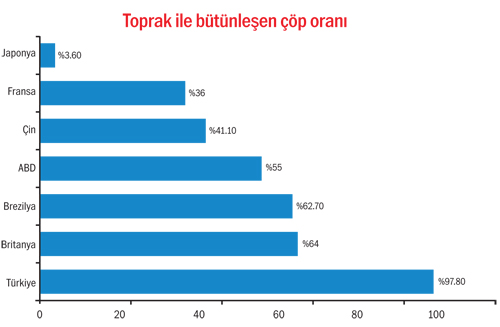Tina LY.
Bir mesajın iletilmesi için en iyi yollardan biri sinema filmidir. Ocak ve şubat ayları Oscar ile Altın Küre nedeniyle sinemaya olan ilginin en yoğunlaştığı dönemdir. Bunu fırsat bilerek daha önce ödül almış veya aday olmuş bazı filmlerin verdiği mesajları tekrar değerlendirelim. Kriterler, pazarlama ve iletişimin en basit temelleri olabilir:
• Anlaşılırlık: Verilen mesaj net mi ve kolayca kavranıyor mu?
• Tanıtım: İletişim kampanyası, filmin vermeye çalıştığı mesajla uyumlu mu?
• Kanallar: Dağıtım stratejisiyle geniş veya hedeflenen kitlelere ulaşıyor mu?
• Sonuç: Filmin verdiği mesajın, izleyicilerin davranışlarına etkisi var mı?
Günümüz filmlerini incelemeden önce biraz geçmişe gidelim. Görsel sanat, 18’inci yüzyıldan bu yana çevreci mesajları iletmek için kullanılıyor. Romantik Hareket’ten John Constable ve J.M.W Turner’ın eserleri en bilinen örnekler olarak tanınıyor. Elbette gelişimle birlikte mesajların iletimi tablolardan ekranlara taşındı. Yetişkinlerin alışkanlıkları derilerine işlediği için davranışlarını değiştirmek zordur. Bu nedenle çevreci mesajları iletmek adına yoğun olarak sürekli öğrenen çocuklar tercih edildi. Çevre konusuna değinen 20’nci yüzyılın en önemli filmleri arasında Miyazaki’nin Prenses Mononoke’si geliyor. Bunun nedeni de 1997 yılında yayınlanan filmin ana karakterinin bir “orman” olması… Japon mitolojisini kullanarak hikayeler üreten Miyazaki, genel olarak filmlerinde “doğaya zarar vermenin sadece fauna ve florayı değil aynı zamanda insan varlığını da tehdit ettiğinin” altını çiziyor. Şimdi 2000’li yıllara gidelim ve dev Hollywood prodüksiyonlarını inceleyelim. Kayıp Balık Nemo, Wall-E ve Avatar dünya genelinde gişe başarısı elde etti, izleyiciler ve eleştirmenlerden genel olarak iyi notlar aldı. Peki verdikleri mesajın yarattığı etki ne oldu?
1- Kayıp Balık Nemo (2003): Filmin konusu gayet basit ve anlaşılır. Nemo bir dişçi tarafından yakalanır ve hediye edilmek üzere bir akvaryuma konur. Nemo’nun babası Marlin, oğlunu bulup gerçek yuvası okyanusa geri getirebilmek için çabalar. Marlin’in tüm yolculuğu boyunca, izleyiciler okyanus dünyasının zenginlikleri ve su akımlarının aslında tüm canlıların hayat döngüsü için ne kadar önemli olduğunu gördü. Ancak ne yazık ki filmin vermeye çalıştığı mesaj kamuoyu tarafından doğru anlaşılmadı. Deniz canlılarını korumak yerine tropikal balıklara yönelik talep patlaması yaşandı. Tüm çocuklar birer Nemo istemeye başladı. Özellikle palyaço balığı türü tehdit edilmeye başlandı. Tropikal canlı kaçakçılığı arttı. The Guardian gazetesine göre, Vanuatu ve bölgesinde mercan ekosisteminde yaşayan canlılar katledildi. Bu sadece birinci perde… Diğer yandan, Nemo’yu izleyen birçok kişi evlerinde bulunan tropikal akvaryum balıklarını özgür bırakmak istedi. Ama genellikle yanlış okyanusa! The Indepent gazetesinde Charles Arthur’un makalesine göre, doğal olarak ait olmadıkları denizlere bırakılan tropikal balıklar bu bölgelerdeki ekolojik dengeyi alt üst etti. Kısacası, 2003 yılında animasyon dalında Oscar ile ödüllendirilen Kayıp Balık Nemo, en iyi çevre kategorisi olsaydı aynı başarıyı pek yakalamayabilirdi.
2- Wall-E (2008): Başarılı bir kampanya ve dağıtımla geniş kitlelere erişen animasyon filminin merkezinde, günümüzün en önemli sorunlarından aşırı tüketim ve beraberinde getirdiği atık sorunu yer alıyor. Aşırı tüketen ve obezleşen insanlar önce dünyayı bir çöplüğe çeviriyor. Bitki örtüsünü katlediyor ve ardından çareyi uzay gemilerine binerek gezegeni terk etmekte buluyor. Robotlar ise geride kalarak yeryüzünü temizlemeye çalışıyor. Atık yönetimi için çoğunlukla 3 yöntem kullanılır: Toprakta çöp sahaları oluşturmak, yakmak ve geri dönüşüm. Martin Medina’nın Foreign Policy’de yayınlanan Talking Trash makalesindeki verilere göre, ne yazık ki Türkiye’de çöplerin yüzde 97.8’i doğrudan toprağa atılıyor. Filmin sonunda küçük robot Wall-E’nin yardımları sayesinde insanlar tekrar Dünya’ya geri dönebiliyor. Fakat gerçek hayatta, bu şekilde tüketmeye ve atık üretmeye devam edersek, robotlara güvenirsek animasyonda olduğu kadar şanslı olamayabiliriz. Dolayısıyla Wall-E’nin finalde değil, fakat film sırasında verdiği mesajı daha çok dikkate almalıyız.
3- Avatar (2009): James Cameron’ın birçok filminde olduğu gibi Avatar’da da birden fazla mesaj ve konuya değiniliyor. Doğal yeraltı kaynaklarının azalması, Irak Savaşı ve terörün yorumlanması bunların arasında yer alıyor. Fakat çevre ve sürdürülebilirlik yaklaşımıyla Avatar aynı zamanda Gaia Teorisi’ni mükemmel bir şekilde yansıtarak önemli bir mesaj veriyor. Biraz açmak gerekirse James Lovelock, Gaia Teorisi’ni şöyle tanımlıyor: “Gaia, tüm dünyayı tekil bir organizma olarak görür. Bu organizmada, sembiyotik ilişki içerisinde olan bireysel elementler birlikte var olurlar.” Kısacası, Gaia bir ekosistemin tüm parçalarının birbirine bağlı ve bağımlı olduğunun altını çizer. Avatar’da ekrana yansıtılan yerel halk Na’vi’lerin gezegenleri Pandora’ya bağlı olduğu gibi… Na’vi’ler kuyruklarıyla birçok farklı canlıya ve bitki örtüsüne bağlanabiliyor. Na’vi’ler bu bütünlüğün farkında oldukları için doğalarını ve gezegenlerini savunmak için savaşıyor. Pandora’nın milyonlarca yıldır devam eden doğal döngüsünün insan müdahalesiyle zarar görmesini engellemek için mücadele ediyorlar. Avatar başarılı bir şekilde “Pandora’yı kendi gezegenimiz olarak farz ederek bizim de korumak için en iyi çabayı göstermemiz gerekmez mi?” mesajını veriyor.
Geniş kitlelere hitap eden filmlerden ziyade belgesel yapımlar, çevre ve sürdürülebilirlik mesajlarının daha güçlü bir şekilde verilmesini sağlıyor, ilham veren bir farkındalık yaratıyor. Öne çıkan yapımlar olarak An Inconvenient Truth, The 11th Hour ve The Cove akla geliyor.
Türkiye’de durum
Türkiye’de de özellikle son dönemde önemli belgeseller çevreye yönelik algının değişmesi misyonunu üstleniyor. 2012’de; “Ekümenopolis Ucu Olmayan Şehir” adlı belgesel, İstanbul’un global bir şehir, bölgesel finans merkezi olarak konumlanmasının ve bunun aslında şehrin gerçek sahibi olan içinde yaşayanların hayatı üzerindeki etkisine odaklanıyor. Belgeselde yer alan verilere göre, şehrin nüfusu 3.5 milyonken hazırlanan planlar, İstanbul’un doğal kaynaklarının ve ekosisteminin maksimum 5 milyon kişi için yeterli olduğunu gösteriyor. Şimdi 15 milyonun üzerindeyiz, 15 yıl içinde ise 23 milyon olmasını bekliyoruz. Kısacası, ucu olmayan şehir yavaş yavaş içinde yaşayanları tüketiyor mu?
Cennetteki çöplük
Ünlü yönetmen Fatih Akın’ın belgeseli Sürmene’de bulunan Çamburnu Köyü’nün nasıl bir çöplüğe döndüğünü ekrana yansıtıyor. Doğal bir cennet olarak tanımlanan Çamburnu’nun 5 yıl içinde nasıl yok olmaya doğru ilerlediğini anlatan Fatih Akın, projeye 2005 yılında başladı. Cannes ve FilmEkimi dahil olmak üzere birçok festivalde gösterilen Cennetteki Çöplük, çevreyi koruma bilincinin oluşturulması için önemli bir katkı sağlıyor.
Kaynak: Campaign Türkiye Şubat 2013





.jpg)


